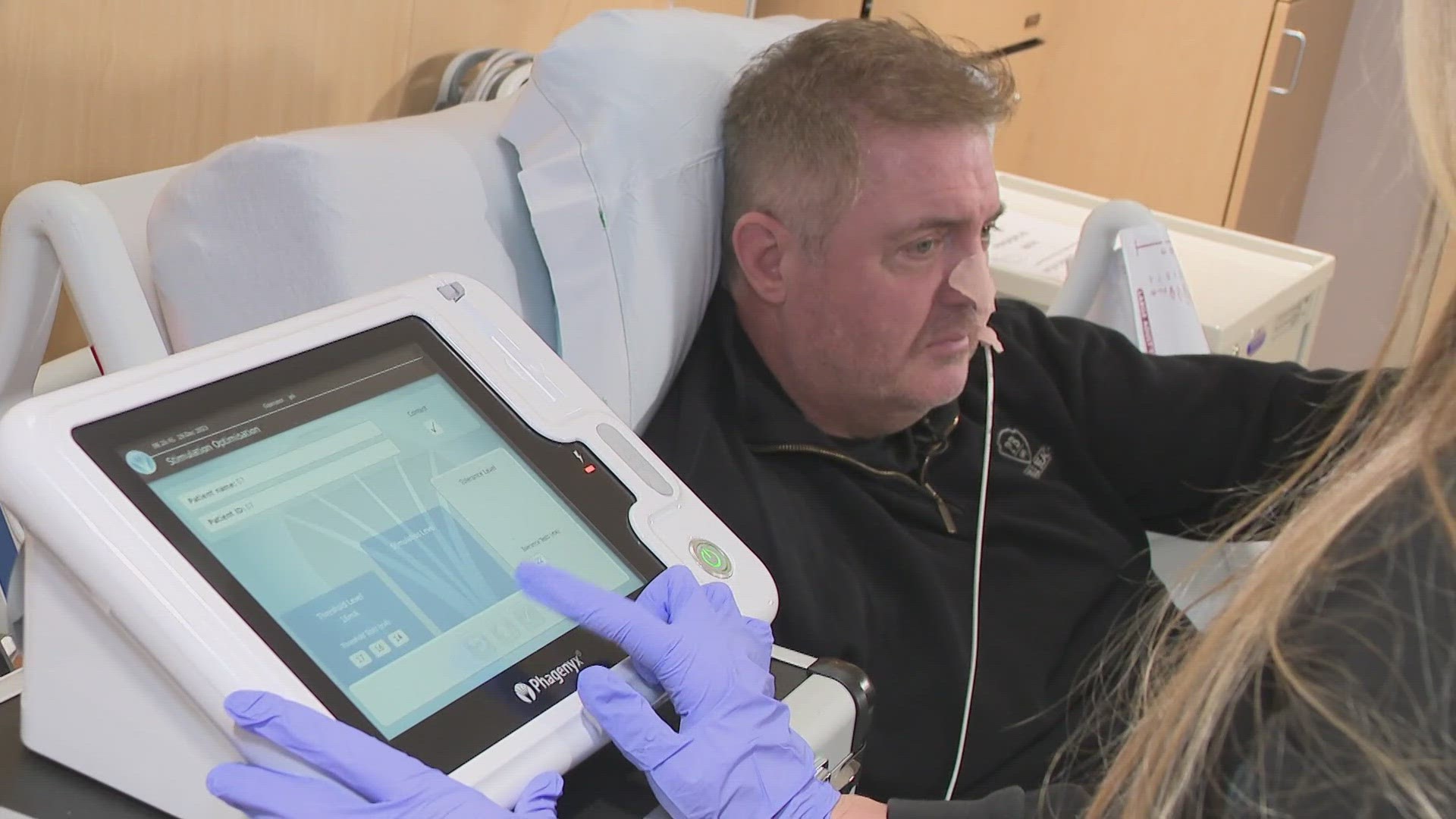PHOENIX — It’s something many don’t think twice about: How often or how well you swallow.
For the last almost six months for Jeremy Hogue, swallowing, and what happens when he doesn’t swallow well enough is at the forefront of his mind.
“Three or four times a day, you know, when I eat I was choking - literally choking - where you feel like you need the Heimlich maneuver because stuff is going down into your airway and you can’t live like that,” Hogue said.
This past June, the former USC Football Academic All-American center suffered a stroke, affecting his speech, the right side of his body and how well he swallows.
“I thought I was in best shape my life, I didn't have high blood pressure, I didn't have high cholesterol, I didn't have diabetes, or any other issues,” Hogue said. “And all these doctors would sit there and tell me how healthy I am. Meanwhile, I spent 70 days in the hospital this year, having had a stroke that almost killed me.”
While Hogue lives in California, the struggle with swallowing and choking is what led him to Banner-University Medical Center Phoenix hoping to find improvement.
“I told my family, it’s like if I could really swallow normally, that would be the biggest life-changing thing,” Hogue said.
Imaging taken as Hogue was swallowing various substances at the hospital shows how his epiglottis, or the “trap door” to his airway, wasn’t closing exactly when it was supposed to, causing the substance to go into his airway.
For six days, he received treatments from the Phagenyx Neurostimulation System, which is used to address dysphagia or difficulty swallowing.
Before the system was available, Dr. Andrei Alexandrov, a neurologist and chair of the Department of Neurology at the University of Arizona College of Medicine-Phoenix, said patients would practice or expect to start swallowing using ice chips.
“If the person lost the ability to swallow and puts the ice chip into the mouth, and then waits for the swallowing to occur - It's like I use the analog - One is going to the gym, picks up weights and then stands and holds them instead of lifting them,” Alexandrov said. “So you can't expect to build muscle if you're not lifting weights.”
The system uses electric current delivered right to where we usually swallow.
“Kind of the secret juice of that electric current is that it both stimulates the reflex locally, increasing kind of the transmission of useful impulses and as well as gives information to the brain so that surviving brain cells can actually go rewire itself,” Alexandrov said.
The treatment right now consists of six days of 10-minute treatments.
“Pushes that person as if they went to the gym. And just to give an idea that most of our patients during this 10-minute stimulation swallow anywhere from 50 to 150 times,” Alexandrov said. “So that number of swallowing is used more than during the best dinner of your life.”
When Hogue started the treatment, he said he could feel the muscles contracting strongly, but at the end felt the electrical stimulation.
“Which I think is, really, a good sign that my sensation is coming back,” Hogue said.
The device received FDA approval last year. Jeremy is the seventh patient coming through Banner-University Medical Center Phoenix, which is one of only a few in the U.S. offering the treatment.
“Even a little progress makes a huge difference,” Alexandrov said. “I can tell like if the person kind of becomes depressed and withdraws from care because quality of life is lost, and then all of a sudden, after these stimulations the person starts to enjoy food by mouth - that can be life-changing, even if you are bedridden.”
Imaging repeated with Hogue swallowing the same substances shows improvement in his epiglottis and less of the substance getting into his airway.
“It’s validating, that’s how I’m feeling. It’s pretty cool to say that I’ve been doing this almost six months and in six days I finally have dramatic improvement,” Hogue said.
Right now, the treatment is approved for just the six-day 10-minute treatment. However, Alexandrov said he’s had other patients come back asking if they can get another set of treatments because of the improvement they’ve seen. Alexandrov said other conditions cause swallowing issues, and it’s not known yet if this treatment could help them too.
“I think we're just at the beginning of a great and long journey. This is the first step,” Alexandrov said.
Alexandrov said the new treatment is a reminder though to know the signs of a stroke: weakness on one side, speech issues, inability to see or walk. All of these are signs to call 911 and get to the hospital as quickly as possible to have the best chance to address the stroke.
“You don't have much time you only have one hour to get to the hospital for us to do the best job so we can prevent these discussions. But unfortunately, if stroke already occurred, and if you're suffering from dysphagia and you're unhappy with the feeding tube that you have to still have perhaps you should consider coming for that treatment,” Alexandrov said.
Those who are experiencing dysphagia from a stroke they’ve had can have their neurologist contact the Banner-University Medicine Neuroscience Institute at 602-521-3300 for referrals for inpatient evaluation to determine if they are a candidate for the therapy.
Up to Speed
Catch up on the latest news and stories on the 12News YouTube channel. Subscribe today.

